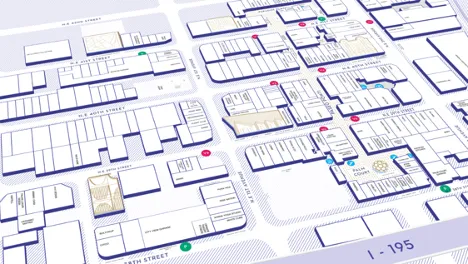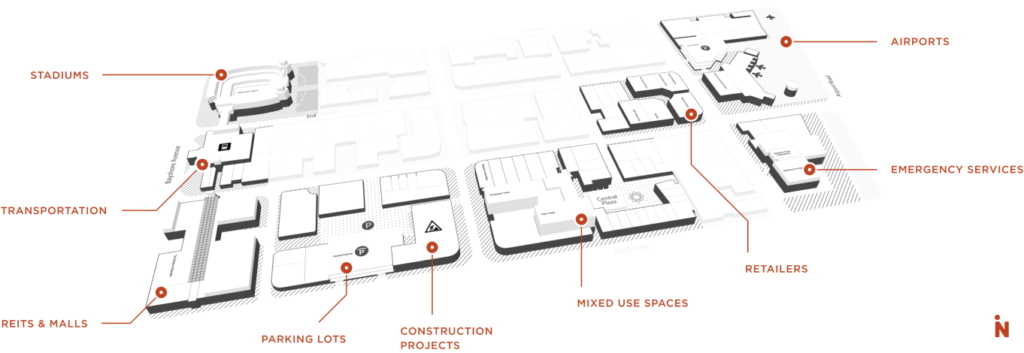
The Indoor Mapping Landscape in 2021
Today, maps are everything. We use them to orient ourselves within the world, locate areas we’re not familiar with, and get directions to exactly where we need to go. Getting around the old-fashioned way is no longer the go-to method of discovering our surroundings.
Looking at wayfinding signs, asking for directions, and trial and error is now being replaced with advanced navigation technology. Today, most of us are familiar with outdoor mapping, but what about when we enter the indoors?
Why is indoor mapping important?
Soon, getting lost indoors might become just as rare as getting lost outdoors. Indoor mapping use cases are popping up regularly as more businesses are realizing the benefits of indoor maps. Here are some of the common uses we see for indoor mapping:
Space visualization
An indoor mapping solution helps visualize an indoor space and everything that it has to offer. With a digitized map, visualizations can be 3D and interactive, allowing users to easily pan, rotate, zoom, and explore a space. Spatial data is connected to physical locations in a building, so that everything is placed according to real world locations. From washrooms, to exits, to stores or offices or restaurants, indoor mapping technology allows users to see the entirety of a venue along with their indoor location.
Navigation and indoor positioning
Indoor mapping makes the indoors discoverable by enabling solutions such as indoor positioning and navigation. Indoor positioning accurately determines a user’s position within a building, in the same way that GPS shows their location on an outdoor map. This makes it easy for users to orient themself and navigate seamlessly through accurate, turn-by-turn directions. We see navigation capabilities being increasingly helpful in complex buildings such as large grocery stores, offices, hospitals, and airports to name a few.
Revenue generation
Indoor mapping can also act as a foundational layer for additional experiences. For instance, we are seeing maps being used to showcase deals, promotions, and events occurring across different buildings. According to 56% of CEOs, digital improvements have led to increased revenue. With accurate indoor location-based data, businesses can also generate insights and analytics on what visitors are looking for by tracking searches and location selections.
How indoor maps will enhance businesses
Indoor mapping not only provides an excellent experience for the end-user, but also for the companies who own or manage the property. Digital indoor maps can provide valuable information for a wide array of businesses that goes well beyond providing a visual of their venue. Property owners can store important information about their building or layout, including exits and emergency routes, amenity placements, leasing information, and more.
Building managers and map administrators can use indoor mapping software to make real-time updates to their venues, from long-term changes to temporary ones, ensuring maps will always be up-to-date and display accurate information. With the simple editor tools available today, users can expect to see more accurate experiences while researching, navigating, and exploring the indoors.
Indoor maps have become an extension of company brands, customized to fit seamlessly within their digital strategy. This is important, as 52% of marketers around the world use digital transformation as their top strategy to drive company growth. Paired with the ability to access these maps from any device, companies can drive business by delivering an enhanced user experience.
Even more, indoor maps are starting to act as a digital asset. Property owners can highlight new additions to their buildings, for example, new restaurants or clothing stores. With the ability to layer additional solutions, such as indoor positioning, on top of a digital map, property owners can also seize marketing opportunities by sending marketing notifications while a user is exploring their property.
Indoor mapping across a variety of industries
Indoor maps unlock unique experiences and powerful use cases across many different venue types. Stadiums, offices, malls, retail stores, hospitals, grocery stores… the list goes on! With the ability to layer additional technology onto maps, the possibilities to deliver an enhanced experience indoors are limitless. Below are some industries that we expect to use indoor maps as an integral part of their overall digital strategy:
- Shopping malls
- Office buildings
- Retail and grocery stores
- Stadiums and arenas
- College and university campuses
- City districts
- Theme parks
- Hotels and resorts
- Hospitals and healthcare centres
- Airports
- Train stations
- Convention centres
- Warehouses
- Museums
- Construction sites
- …and more
Mappedin over the next 5 years
Mappedin continues to be the leading platform for indoor spatial data management, digitizing venues, and building best-in-class indoor mapping experiences. At Mappedin, we believe there is a use case for indoor maps across every building. Our scalable and flexible platform has enabled us to work with leading operators and developers around the world and we look forward to discovering more use cases for our tools over the years to come.










